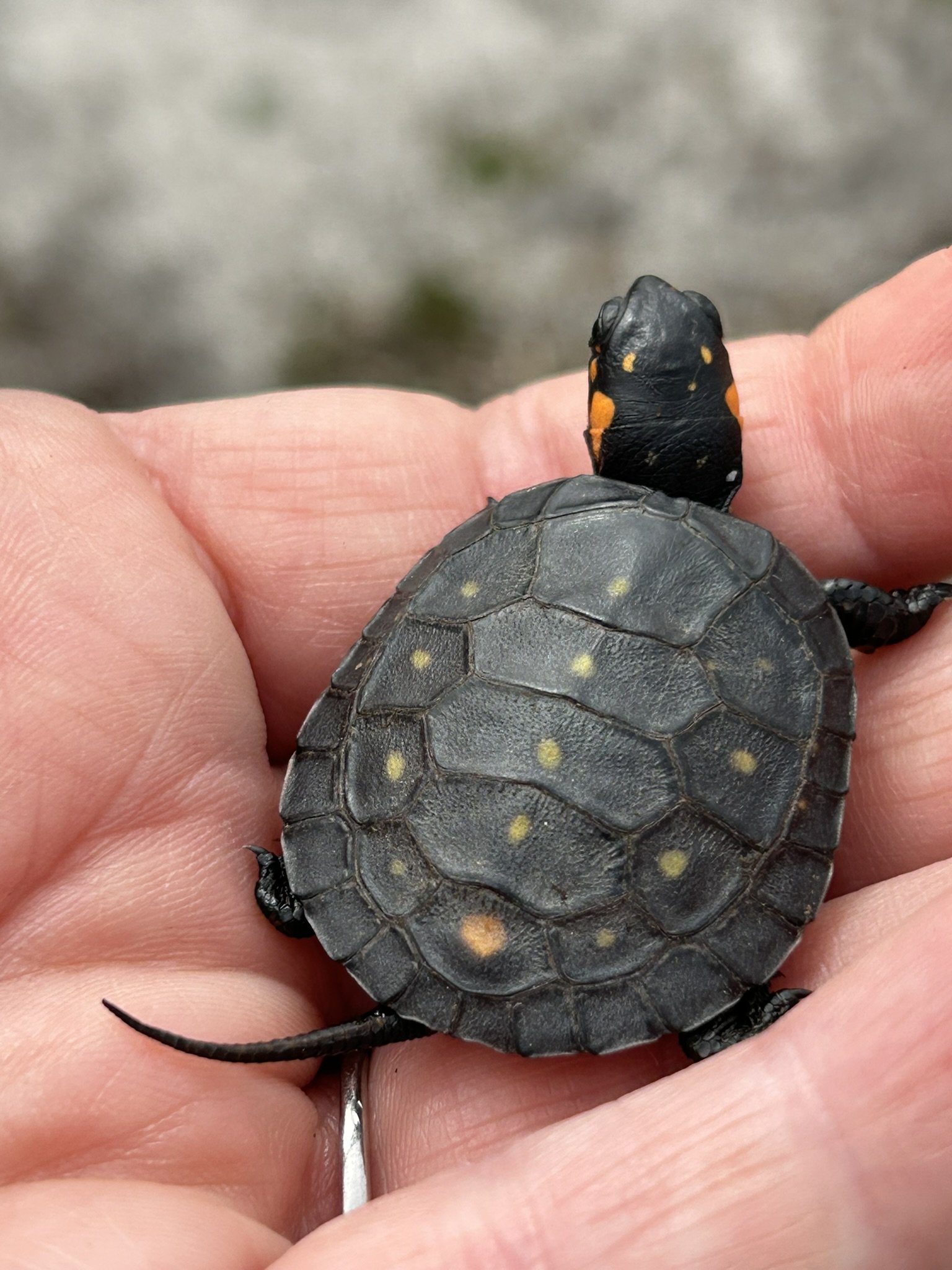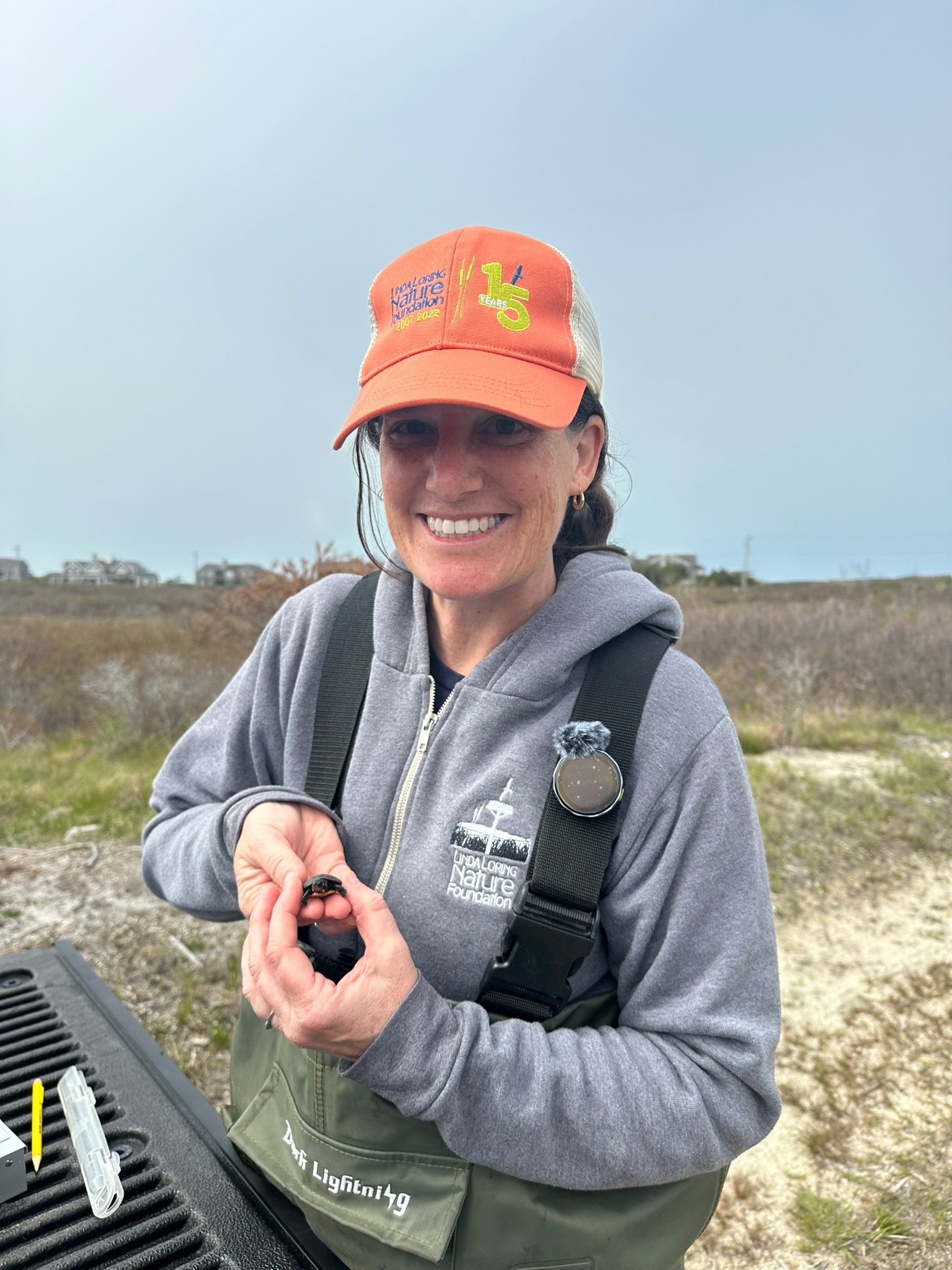Turtle Spotting
Walking through the heavily vegetated bog at the Linda Loring Nature Foundation, equipped with waders and data-collection tools, Dr. Sarah Bois taught me all about the turtle species on Nantucket and shared her hopes of finding a Spotted Turtle before the day was through. It’s about that time when our island’s turtles are becoming active again, so be on the lookout!
Did you know that Spotted Turtles (Clemmys guttata) are a species of conservation concern?
Although once one of the most common turtle species in Massachusetts, many local populations today are found in isolated, declining numbers. Studies monitoring population sizes have reported a nearly 50 percent decline over a 25- to 30-year period. This is presumably due to a combination of factors like habitat loss and fragmentation, pollution, climate change impacts, road mortality, and lack of successful reproduction.
If you’re unfamiliar with what Spotted Turtles are, they are freshwater turtles that inhabit wetlands like bogs, vernal pools, swamps, and small ponds. They are named after the yellow polka dots scattered across their dark shell. According to the U.S. Fish & Wildlife Service, Spotted Turtles can live between 65 and 110 years. They are found from southern Ontario and Maine south along the Atlantic Coastal Plain to Georgia and west to northern Indiana. Throughout most of this range, Spotted Turtles are considered threatened, endangered, or vulnerable.
Here at the Linda Loring Nature Foundation, we collect data on all freshwater turtle species found on the property, with a special focus on the Spotted Turtle. Considering their population status, you can imagine our surprise and delight when, halfway through the bog expedition, we saw a little one! Perched on a vibrant bed of sphagnum moss, this 1.1-inch-long hatchling had no idea how excited we were to see it. Nor did the second hatchling Dr. Bois found a little while later. It was a turtle-y day!
Dr. Sarah Bois plans to catch adult Spotted Turtles this spring and fall, in the hopes of fitting some of them with transmitters, which will allow them to be tracked via radio telemetry. This method involves the transmission of radio signals to track a transmitter attached to the target individual. It is commonly used to gather information about the animal’s preferred habitat, home range, and population dynamics.
Data collected from these transmitters will provide us with invaluable information regarding how Spotted Turtles use the Linda Loring Nature Foundation property, where their prioritized habitats may be, nesting grounds, and hopefully lead us to more turtles!
Our conservation colleagues, the Nantucket Conservation Foundation, have been trapping and tracking Spotted Turtles since 2005, gathering information about populations at Squam Farm, Medouie Creek, and most recently, Windswept Bog. Their research also contributes to understanding Spotted Turtle longevity and supports a statewide survey that may influence its consideration for federal “threatened” protection status.
As the Linda Loring Nature Foundation expands its turtle monitoring program, we’re proud to contribute critical data to the broader conservation picture and complement long-term studies across the island - right here in our wetlands. If you’re interested in learning more about Nantucket’s freshwater turtles and want to get hands-on experience learning alongside professionals, check out our free Ecologist in Training workshop series.
Our May 29th workshop focuses on the research and techniques used to study turtle species and their habitats. Discover your inner field ecologist in a fun and welcoming environment! With each hatchling spotted and each adult tracked, we will deepen our understanding of this remarkable species and strengthen our commitment to preserving Nantucket’s unique biodiversity for generations to come.
First published on Nantucket Current: https://nantucketcurrent.com/opinion/current-nature-turtle-spotting




